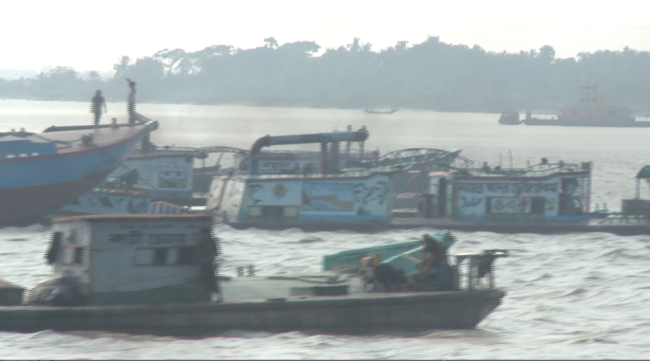A recent filming trip to Satkhira and Khulna took me close to the Sunderbans and past the site of the controversial new power plant at Rampal. Already, a flotilla of dredgers is collecting sand from the river bed to create a large enough platform to hold the 1320 MW coal fired station, a joint venture between India and Bangladesh.

I don’t need to add my voice to those calling for the project to be moved. I think it is obvious enough that nothing like this should be built so close (just 14 kms) to one of South Asia’s last great wildernesses. The government insists that it won’t allow the plant to pollute the forest, but its record of protecting the environment from industry is laughable – just look at its continued failure to move the tanneries from Hazaribagh in Dhaka, and its poor record of monitoring other industrial plants close to the forest (as recently reported by the Daily Star).
But there’s one other thing that bothers me about this project. It is what it says about Bangladesh’s attitude towards climate change.
Now I have no doubt that global warming exists and that it is caused by man’s actions. I also don’t doubt that Bangladesh is especially vulnerable to climate change, because it is low-lying, because of its many rivers that flow from the Himalayas, and because of its large and largely poor population. I strongly believe that it is important that rich, western countries continue to put millions into Bangladesh to help it become less vulnerable.
However I do also think that the standard account of the likely impact of climate change on Bangladesh is a huge over-simplification that ignores the role that the country itself should play in protecting the environment.
For example, it is often reported as fact that rising sea levels are causing Bangladesh’s rivers to become more saline every year, and that an increase in the ocean’s temperature makes cyclones more likely. These claims are made by leading Bangladesh climate scientists, the government, donor countries, aid groups and journalists.
They might well turn out to be true, but at the moment they are just theories.
The argument that cyclones are becoming more frequent appears to be supported by the fact that the last few years have seen five major storms in the Bay of Bengal. But that is not a lot of data on which to make such a big claim.
“It might well be the case that climate change has caused these, but we won’t know for sure for another 100 years,” a leading water engineer told me.
Other experts have played down the notion that rising sea levels are the sole or even the main cause for salt-water intrusion. As surely every Bangladeshi who lives in the estuary knows, water quality is affected by the amount of water coming downstream as well as the amount of water going upstream. Thus saline levels are affected by the size of the monsoon and the amount of water that flows from India – as well as the tides and sea level rise that push sea water inland.
Furthermore, standard accounts of the likely impact of climate change on Bangladesh tend overlook local actions. But the large-scale replacement of paddy fields with shrimp ponds, and the chopping down of mangrove forests have vastly contributed to salt water intrusion and to Bangladesh becoming more vulnerable to cyclones.
And what about Bangladesh’s own carbon emissions? This is a rapidly industrialising and rapidly urbanising country. It needs kilns to make bricks, it needs power stations for electricity. But does it really have to build a coal-burning power plant right in the middle of the Climate Change Ground Zero, as some like to call it?
Wouldn’t some of the foreign aid money being used to help communities adapt to the supposed affects of climate change not in fact be better spent helping the country find cleaner energy sources?


